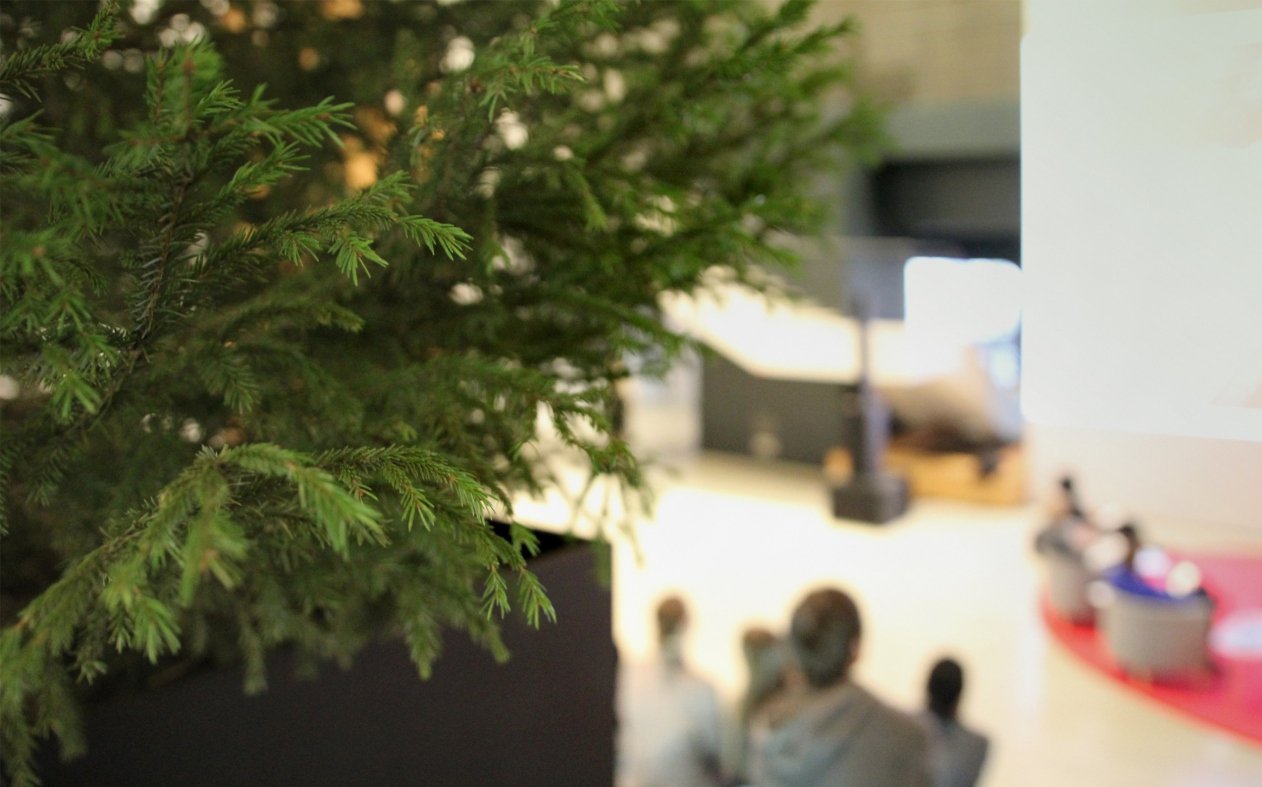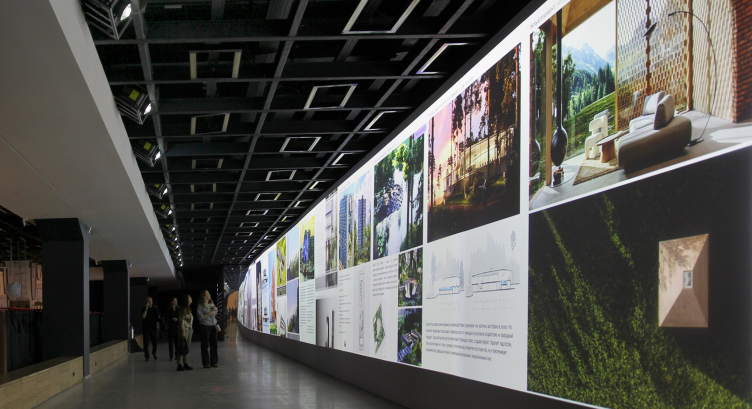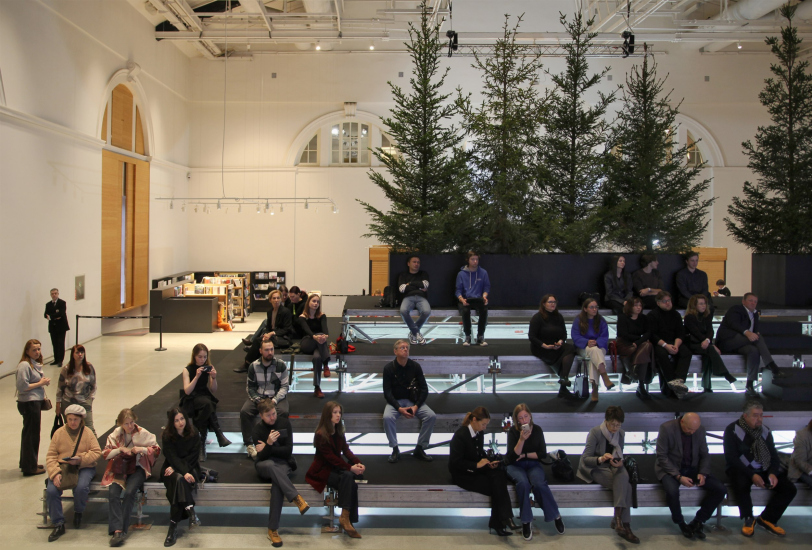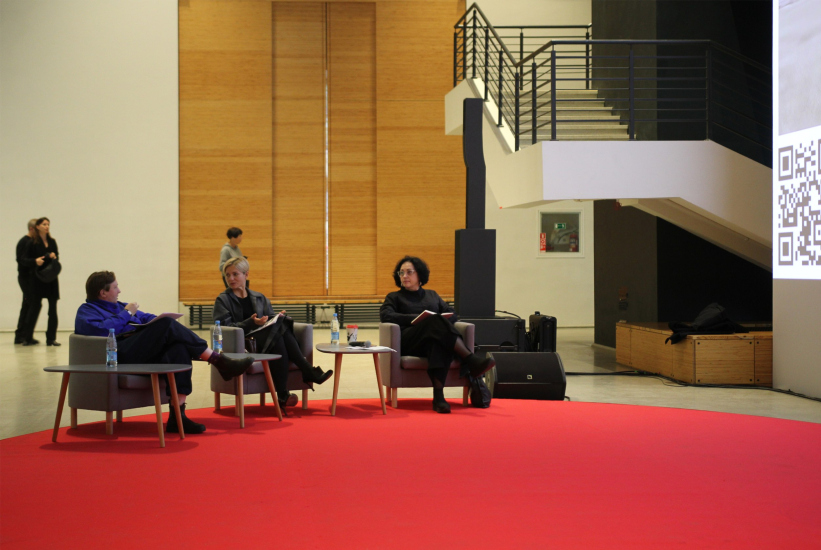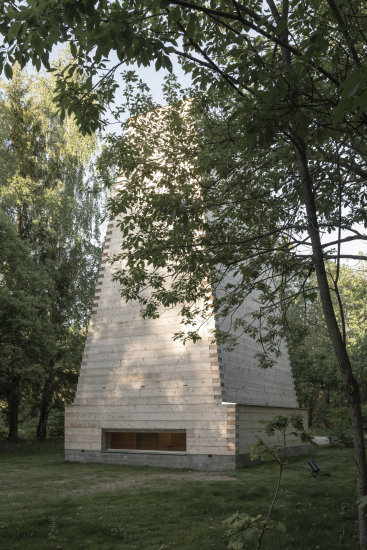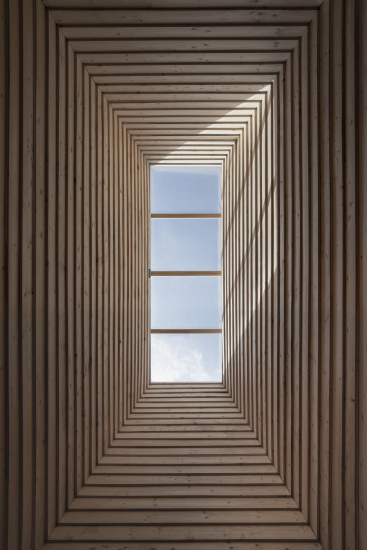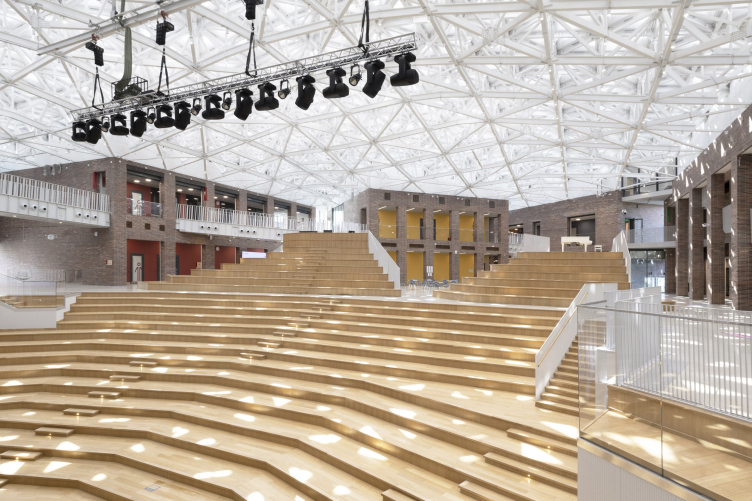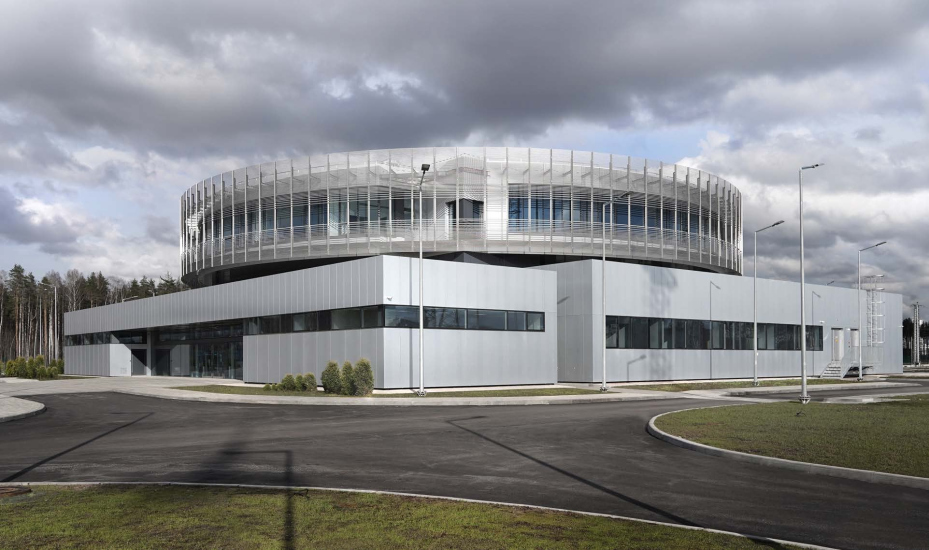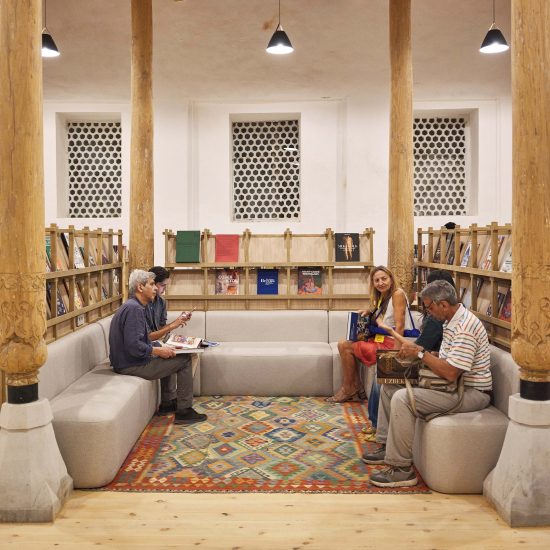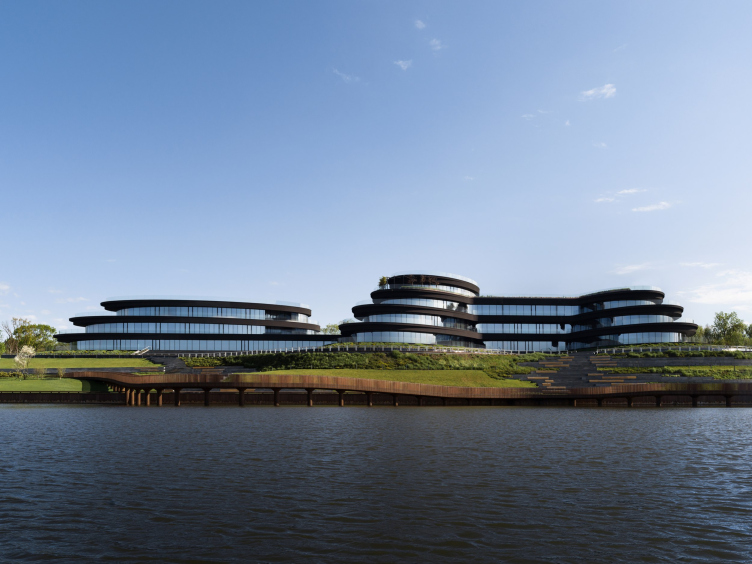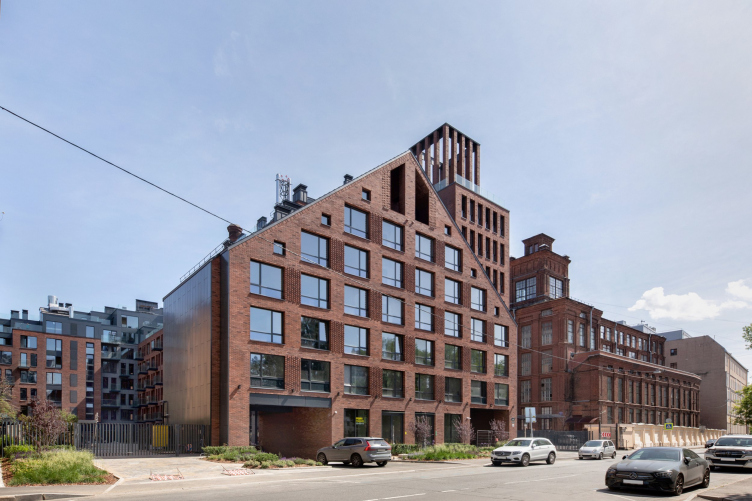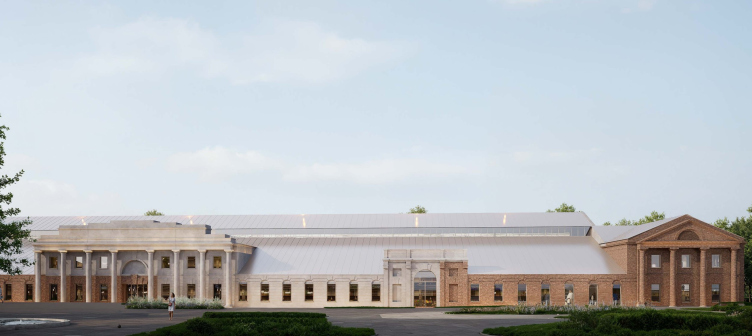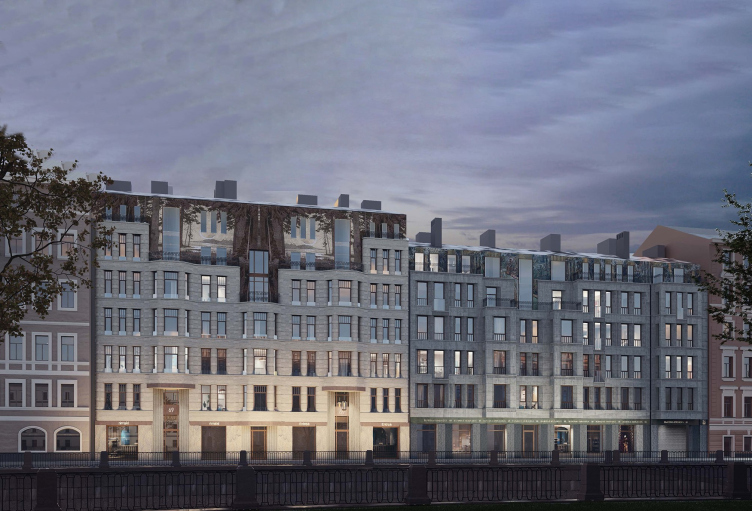Architecton 2025: the exhibition
Copyright: Photograph © Julia Tarabarina, Archi.ru
Any architecture firm registered in the city could apply, regardless of where the project was located. As a result, the winners included works from Yekaterinburg, the Moscow region, Barnaul, and Krasnodar – though, naturally, most projects were from St. Petersburg.
Initially, the jury was invited to vote on all 170+ projects submitted. Then, for the live presentations, they were divided into four groups corresponding to the award categories. In any case, the introduction of live presentations proved a positive experience. The next step could be for jury members to visit completed projects in person – an idea that’s been discussed before, though I’m not aware of it being implemented yet. Each group of the live jury was required to reach a collective decision on the main category award and was allowed to award one or even two special prizes.
The Grand Prix proved the hardest to decide. The choice came down to two projects of very different types, ranks, and scales: the Primakov Gymnasium by Nikita Yavein and Studio 44, and the Obelisk House in Nikola-Lenivets by Pyotr Sovetnikov and Vera Stepanskaya of KATARSIS Architects.
Below are the winners.
Grand Prix
Obelisk House, Nikola-Lenivets
Pyotr Sovetnikov and Vera Stepanskaya, KATARSIS Architects
The structure is mysterious – just enough to fit among the art-objects of Nikola-Lenivets, which, as is well known, are suitable for living yet are primarily artistic statements. The house, whose construction took two years due to various circumstances, stands alongside works by Alexander Brodsky, Alexey Luka, and Sergey Kuznetsov. Built of wood atop a partially sunken concrete plinth, it contains two levels – one low, and another shaped like a vertical shaft with a skylight. We previously covered the project here.
Public Buildings / Completed Projects
Yevgeny Primakov School
Nikita Yavein, Ivan Kozhin, Studio 44
The second phase of the school with a diplomatic focus for gifted children includes housing for students, teachers, and guests, though the centerpiece is undoubtedly the new building for upper grades. Its optimal “snowflake” plan brings together sports facilities and classrooms, divided into four “houses” like in Hogwarts, all organized around a vast multi-level atrium. Inside this atrium are sloped platforms, “island-hills”, and grottoes – one housing a library, another a small café; an amphitheater descends toward a transformable stage that can either be enclosed as a hall or open up through a glazed backdrop to the courtyard. It’s a true city with a covered heart. Stylistically, the school offers a wide range of impressions – from the white entrance portico, faintly reminiscent of the 1930s, to what seem like deliberate references to Renzo Piano. Our detailed story on this building can be found here.
In the category of completed public buildings, the jury awarded two special prizes: to Digital Networks Laboratory by AMD Architects and to the Library in Bukhara by ludi_architects.
Yevgeny Primakov School, 2nd phase
Copyright: Photograph © Aleksey Naroditsky / Studio 44
Another widely known project – the Krasnodar Football Club Training Base by RYMAR.STUDIO – received an honorable mention.
Housing / Completed Projects
James Beck Manufactory
Nikita Yavein, Anton Yar-Skrjabin, Studio 44
It goes without saying that both Studio 44 projects recognized with first prizes in the “completed” categories – traditionally considered the most prestigious – had already been well known within the professional community since their design stage. The James Beck residential complex is the result of an industrial site’s transformation, where the architecture was resolved in harmony with the brick industrial context, though without imitation. It’s a confident contextual statement – a case where everyone wins: the urban environment accepts a contemporary building as one of its own, while the building itself expresses a kind of typically St. Petersburg restraint paired with quiet boldness.
Krasnodar Football Club Training Base
Copyright: Photograph © Dmitry Chebanenko, Yevgeniy Taranzhin / provided by RYMAR studio
Public Buildings / Project
Silver Smelting Plant in Barnaul
ludi_architects
A redevelopment project for a former copper – later silver – smelting plant located in the city center, which, according to the description, has fallen into stagnation. The factory buildings hold heritage protection status, and the proposed new function appears to combine housing and retail, with a covered urban street running between structures of varying degrees of preservation and novelty. The historical forms are retained, the brick cleaned and partially unearthed, while the new additions are distinguished by matte-polished metal surfaces.
Manufactory residential complex
Copyright: Photo courtesy: Studio 44
Housing / Project
“Great Ural – The Path of the Avant-Garde” Complex
Nikita Demidov, Pavel Gordeev, Gordeev-Demidov Architectural Bureau
A competition-winning project that, unfortunately, never went into production – as often happens. Designed as an expansion of the Great Ural Hotel, built in the 1930s, the architects proposed to supplement the existing volumes with a sequence of not merely residential units but art residencies, whose modules, adapted to contemporary standards, trace back to the “F-cell” of the Narkomfin Building. Between the old and new wings they envisioned a two-level public zone – one open pedestrian street and another underground one, with skylights. Interestingly, although the client ultimately declined the Gordeev-Demidov design, they did adopt the architects’ ideas regarding the project’s public and artistic functions.
Silver Smelting Plant in Barnaul, project
Copyright: © ludi_architects
The project stands out both for its free-spirited, competition-level inventiveness and for the fact that, while “mirroring” a rather conventional 1930s building, the architects – in both interior structure and façade composition – turn out to be, figuratively speaking, more Constructivist than the Constructivists themselves. They weave into their work the experimental principles of Moisei Ginzburg’s visionary housing projects, which, alas, never had the chance to unfold within Soviet practice. Grandfather Ginzburg would likely have approved.
In the housing projects category, one special mention was also awarded – subtitled, following Vladimir Frolov’s suggestion, “For the Synthesis of the Arts”.
However, it must be said that this “synthesis of the arts” wasn’t really the point. The category featured two equally strong projects – and, to be honest, the one that received the special prize might even be a bit better. It’s a kind of variation on the Manufactory residential complex – another contextual statement, also by Studio 44, but this time drawing from the architecture of St. Petersburg’s early 20th-century tenement houses. Given a long plot extending from a school building, the architects divided it into two unequal parts and designed – not merely two different façades, as is often done today – but two distinct, though related, buildings. With varying floor heights and an offset grid, they captured one of the defining traits of St. Petersburg’s historic apartment blocks. Stylistically, however, the design is quite restrained – as if to imagine what St. Petersburg Art Nouveau might have evolved into in the 1930s had its development not been cut short by the Revolution.
A housing project on Rimskogo-Rorsakogo street, project
Copyright: © Studio 44
Yet the most fascinating part is not even that – nor the fact that the architects playfully refer to the two buildings by gender, calling them “the girl” and “the boy”. As Vladimir Frolov rightly pointed out, the best idea here was to take as a prototype the tenement house of Duke Nikolai Leuchtenberg (1904-1905) and to propose decorating the upper floors with mosaic. Although that building stands quite far away, on Petrogradskaya Side, some 4.5 kilometers from the site, the reference justifies the subtitle “synthesis of the arts”. The result – or should we say results? – is an assured design that balances on the edge of historicism and abstraction, and that confidence alone is deeply impressive.
The jury
Yury Avvakumov
Vadim Bass
Eduard Kubensky
Sergey Kuznetsov
Lizaveta Likhacheva
Ksenia Malich
Anna Martovitskaya
Mikheil Mikadze
Andrey Moguchy
Pavel Sokolov
Nika Strizhak
Yulia Tarabarina
Nikita Tokarev
Narine Tyutcheva
Artem Ukropov
Anton Finogenov
Vladimir Frolov
Dmitry Shvidkovsky
Yulia Shishalova
Nikolay Shumakov
The festival runs until November 2.

